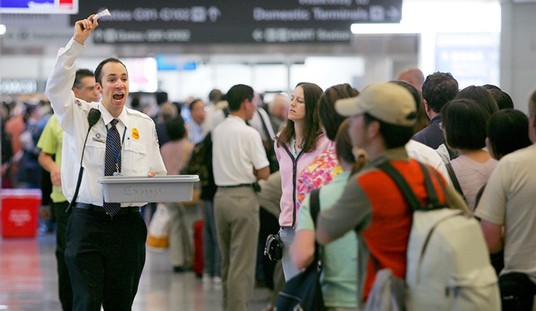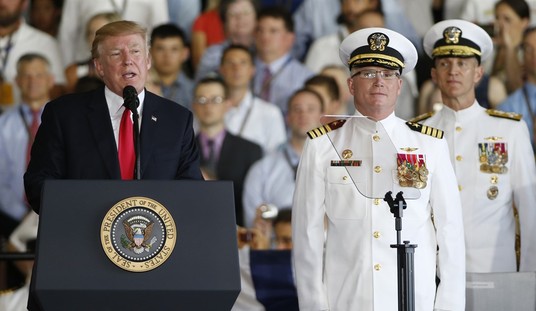With the gas shortage seeping more deeply into the public consciousness, in what was clearly a “Squirrel!” move, the CDC made a public announcement yesterday that fully vaccinated adults are safe to return to normal life activities without the need of wearing a mask or observing forms of social distancing we have all become accustomed to over the past 13 months.
As has been noted by many others, its comical how this revelation — “Neanderthal thinking” only two months ago — happened to fall so short in time after 1) a terrible jobs report for April, 2) a terrible inflation report, 3) outbreak of near-total war between Israel and radical Islamic forces in Gaza, and 4) the cyberattack on an energy products distribution pipeline that caused several states along the East Coast to pretty much run out of gasoline in less than 4 days.
Being freed from the clutches of the mask-Nazis among the Biden Administration, Democrats, and the media probably does what was needed to get the Biden Administration past — for now — the psychic damage caused by the jobs report and the news about inflation. Israel itself will likely solve the Middle East flare-up in the next few days simply by laying waste to a substantial number of Hamas and other radical Islamic groups while absorbing the hit for having done so from the media and world opinion — but it had no real option given the Biden Administration’s fecklessness on the situation.
But the one problem the unmasking of the CDC’s pseudo-science (see what I did there?) will not solve is that it does not get tankers full of gas to the many empty gas station tanks as fast as the Biden Administration probably hopes will happen.
With the Colonial Pipeline starting back into operation on Thursday, the deliveries of gas and diesel that have been sitting in the pipeline can now be made. Because those deliveries were set for a week ago, gasoline and diesel stored in tank farms were used until that supply ran short. The tank farm inventory will be replaced last, but gasoline and diesel can only flow from the distribution points to gas stations as quickly as there are trucks and drivers available to deliver them. I’m certain those supply runs will be scheduled as quickly as the distributors can get the full tanker trucks on the road, but that won’t happen immediately, and some areas are likely to remain without gasoline for several more days.
The tracking service GasBuddy.com on Friday showed that 88% of gas stations were out of fuel in the nation’s capital, about half were out in Virginia and 42% of Maryland stations were dry. Nearly 70% of stations were without gas in North Carolina, and about half were tapped out in Georgia and South Carolina.
Colonial said Thursday that operations had restarted and gasoline deliveries were being made in all of its markets, but it would take “several days” to return to normal, and some areas may experience “intermittent service interruptions during this start-up period.”
“Panic” buying drove the faster-than-normal exhaustion of local supplies in the first instance. Now a circumstance exists where a far larger number of cars and trucks all have empty gas tanks at the same time. A typical gas tanker truck can haul a little less than 11,000 gallons. If an average vehicle fuel tank holds approximately 15 gallons, simple math says a single tanker can supply gas for about 725 vehicles. Given the pent-up demand, most stations will run out of gas the same day they receive a delivery.– and then they’ll be closed again until they get another delivery.
Station operators willing to pay a higher price per gallon may get faster delivery of larger amounts — but that price will then be passed on at the pump. I saw a Twitter user post online earlier a reference to having spent $57 in California to fill up a Honda Civic.
The Colonial Pipeline system stretches from Texas to New Jersey and delivers about 45% of the gasoline consumed on the East Coast.
“We are not out of the woods yet, but the trees are thinning out,” Richard Joswick, global head of oil analytics at S&P Global Platts, said.
Gas stations should be back to normal next week if the pipeline restart goes as planned and consumers are convinced they no longer need to panic-buy fuel, Joswick said. Full recovery would take several more weeks, he estimated.
Welcome to the Biden Administration Green New Deal.













Join the conversation as a VIP Member